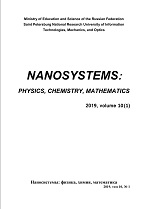|
This article is cited in 1 scientific paper (total in 1 paper)
FROM GUEST EDITORIAL
Electrodes of supercapacitors from nanoporous carbon with nanocarbon additives
E. A. Kiseleva, M. A. Zhurilova, E. I. Shkol'nikov
Joint Institute for High Temperatures, Russian Academy of Sciences,
Izhorskaya st. 13 Bd.2, Moscow, 125412, Russia
Abstract:
Electrochemical double-layer capacitors (EDLC) are emerging energy storage technology, highly demanded for rapid transition processes in transport and stationary applications, concerned with rapid power fluctuations. Rough structure of activated carbon, widely used as electrode material because of its high specific area, leads to poor electrode conductivity. Therefore there is the need for conductive additive to decrease internal resistance and to achieve high specific power and high specific energy. Usually, carbon black is widely used as conductive additives. In this paper, electrodes with different conductive additives – two types of carbon black and single-walled carbon nanotubes – were prepared and characterized in organic electrolyte-based EDLC cells. Electrodes are based on original wood-derived activated carbon produced by potassium hydroxide high-temperature activation at Joint Institute for High Temperatures RAS. Electrodes were prepared from slurry by cold-rolling. For electrode characterization cyclic voltammetry, equivalent series resistance measurements and galvanostatic charge – discharge were used.
Keywords:
carbon nanotube, activated carbon, electrochemical double-layer capacitors, electronic properties.
Received: 19.06.2017
Citation:
E. A. Kiseleva, M. A. Zhurilova, E. I. Shkol'nikov, “Electrodes of supercapacitors from nanoporous carbon with nanocarbon additives”, Nanosystems: Physics, Chemistry, Mathematics, 9:1 (2018), 123–124
Linking options:
https://www.mathnet.ru/eng/nano143 https://www.mathnet.ru/eng/nano/v9/i1/p123
|

|




 Contact us:
Contact us: Terms of Use
Terms of Use
 Registration to the website
Registration to the website Logotypes
Logotypes








 Citation in format
Citation in format 
